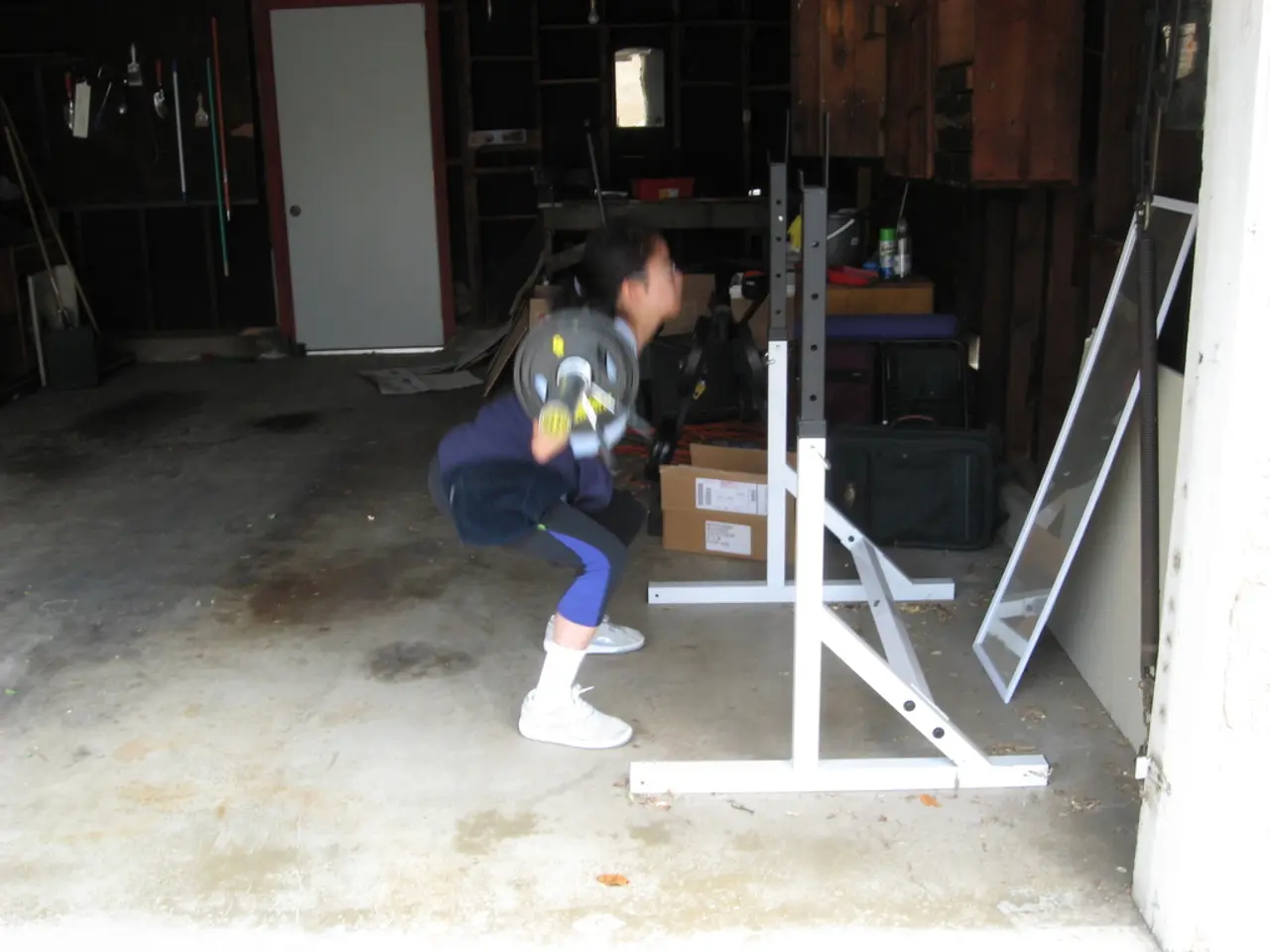Physical fitness exercises and slimming down
Pilates, a low-impact gym activity, focuses on strengthening the body and core through stretches and small movements. This exercise, first originated in the 1930s by Joseph Pilates, has gained popularity as a means to improve body composition and potentially aid in weight loss.
While Pilates alone may not be as effective as high-intensity workouts or weightlifting for significant weight loss, it can play a crucial role in a comprehensive fitness regimen. A study showed that combining Pilates with a weight loss diet over 12 weeks significantly reduced body weight, BMI, waist circumference, and fat mass, while increasing basal metabolic rate (BMR) and muscle mass.
The key to Pilates' effectiveness lies in its ability to improve muscle endurance, posture, and body control. It primarily activates smaller stabilizer muscles but does not generate large muscle hypertrophy like weightlifting. More muscle growth—and thus a higher resting metabolic rate—comes from strength training.
Pilates sessions burn fewer calories than high-intensity interval training (HIIT), steady-state cardio, or weightlifting. However, it supports long-term fitness by enhancing posture, flexibility, and lean muscle tone, which can help maintain a healthy body composition when combined with cardio and strength training.
For the most significant weight loss, a multi-modal approach including diet control, Pilates, cardiovascular exercise, and resistance training is ideal. A systematic review of studies found that doing 60 minutes of Pilates practice 5 times per week for 4 weeks is best for promoting changes in body composition. The longer a person performs Pilates, the more significant the weight loss.
Pilates shares similarities with yoga, focusing on posture, balance, flexibility, and mind-over-body control, but has more emphasis on movement, core strength, and resistance than is typically seen in a yoga session. It can be considered a moderate aerobic resistance-based workout, similar to gymnastics and calisthenics.
Weight loss is the result of maintaining a calorie deficit, which can be achieved through various factors including exercise, diet, metabolism, genetics, and various health conditions. Aerobic workouts can prevent spiking the appetite, and intermittent fasting, which involves going 16 or more hours at a time without eating, can help people lose fat while maintaining muscle mass.
Eating a diet high in protein helps keep a person more satiated and can help them stay in a calorie deficit. Combining Pilates workouts with a nutritious, high protein diet and other forms of exercise can help a person experience the greatest weight loss benefits.
In summary, Pilates is best viewed as a complementary exercise for weight loss, combined with dietary control, cardio, and strength training for best long-term results. Its strength lies in improving muscle endurance, posture, and body control rather than rapid fat loss.
- Incorporating Pilates, a low-impact exercise known for strengthening the body and core, into a diet-controlled weight loss plan over 12 weeks can lead to a significant reduction in body weight, BMI, waist circumference, and fat mass, while increasing basal metabolic rate (BMR) and muscle mass.
- A multi-modal approach, including diet control, Pilates, cardiovascular exercise, and resistance training, is ideal for the most significant weight loss, with a systematic review showing that doing 60 minutes of Pilates practice 5 times per week for 4 weeks can promote changes in body composition.
- Eating a diet high in protein and combining it with Pilates workouts and other forms of exercise can help a person stay in a calorie deficit, lose fat, and maintain muscle mass, thereby experiencing the greatest weight loss benefits.




